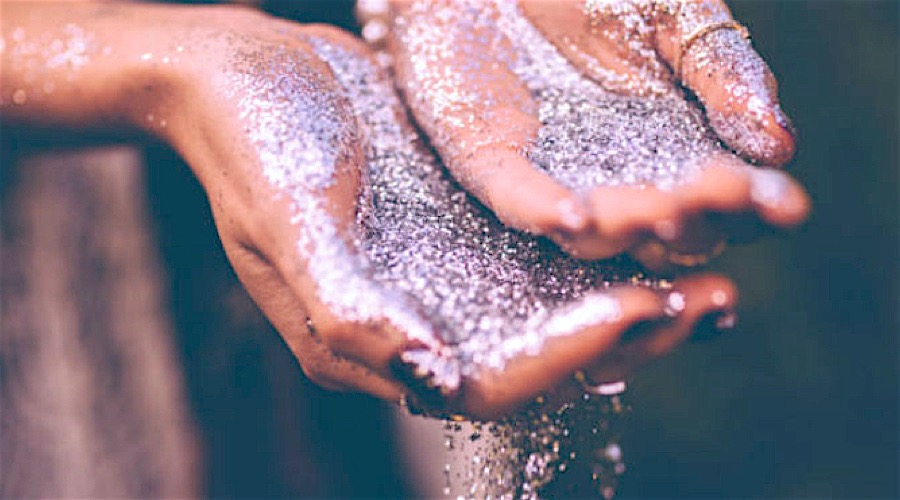
Silver has been playing second investment fiddle to its more popular cousin gold for some time, but that doesn’t mean it isn’t a vary valuable commodity in its own right.
It also probably doesn’t come as too much of a surprise to learn that where gold goes, silver isn’t usually very far behind. In other words, the two commodities often share similar fortunes, good and bad. Silver though has never reached the same illustrious heights in terms of dollar value but, as we’re about to find out, it could well be a far more valuable metal in many other ways.
As a metal, silver is extremely pliable, elastic, heat resistant, conductive, non-corrosive, non-toxic in low doses, has low contact resistant, doesn’t readily oxidise and has proven antimicrobial and biocide properties. That means it can lend itself to a huge range of applications, some of them literally life-saving.
Of particular note are silver nanoparticles (silver NPs), which are tiny particles of silver. Studies have found they have excellent antimicrobial properties and are very effective against most types of bacteria. However, they’ve also proven to be a very handy tool in the fight against some viruses, notably HIV, hepatitis B, herpes simplex, monkey pox, and RSV (respiratory syncytial virus).
Much of this knowledge about silver isn’t exactly new to human kind. We’ve been using it for centuries to treat wounds and infections, preserve foods and liquids, and as a general-purpose disinfectant. Indeed, prior to the mass development of modern antibiotics, silver was a standard in medical treatment in many countries.
How does silver function as an antimicrobial and sanitiser?
It appears to come down to silver’s propensity to release positively charged ions Ag+) in the presence of fluids. Elemental silver itself ie pure silver is atomically neutral and has no antibacterial properties. That doesn’t prevent it from being an extremely valuable mineral in its own right for all the reasons mentioned above. However, it’s silver’s medical and hygiene applications that are under the microscope as we strive to find more effective and less chemically harmful ways of fighting dangerous and deadly microbes.
Whilst there are still many unknowns about exactly how silver ions work as antimicrobials, it is generally accepted that the positively charged ions are attracted to negative ions on bacterial cell walls with a range of devastating consequences for the bacteria. These consequences range from inhibiting their respiratory functions, interfering with cell membrane integrity, and interrupting DNA function. It’s also known that silver ions have the ability to attack a wide range of targets in microbes, thus reducing the chances of developing resistance. Antibiotics on the other hand generally target specific microbial components, allowing the microbe to eventually figure out how to withstand or repair the damage.
With this in mind, here are just some of the many ways in which silver, silver nanoparticles, and silver ions, are being used.
Disease diagnostics has come a long way and one of the latest developments involves the use of biosensors made from silver nano wire. The technology isn’t just restricted to the lab either. At the 2014 US Open, Ralph Lauren produced high-tech shirts with bio-sensing silver fibres in the fabric. The sensors are able to transmit physical information about the wearer (breathing and heart rates, stress levels etc) via Bluetooth to a mobile phone.
Coating surfaces and medical equipment in silver has been found to help reduce pathogen spread. Silver coated catheters and tubes are now common in health care because the silver coating helps prevent infections from developing through their use
We know superbugs are becoming increasingly resistant to modern antibiotics and can spread like wildfire in the right conditions, including infected and contaminated medical environments. However, coating surfaces and medical equipment in silver has been found to help reduce pathogen spread. Silver coated catheters and tubes for example are now common in health care because the silver coating helps prevent infections from developing through their use.
Likewise, silver NPs and silver nitrate can act as an antimicrobial in surgical equipment, ointments, wound dressings, bandages, eye drops (ie conjunctivitis drops for infants), dental alloys and more.
3D silver surgical mesh helps support tissues and organs during surgery.If the surgery is for a hip joint implant, the new implant may be what is called a ‘smart-hip‘, which has silver coated bearings to prevent infection and reduce friction. Once the surgeon has finished, chances are the incisions will be closed up with silver needles and sutures.
Silver diamine fluoride is a topical treatment for tooth cavities and hypersensitive teeth, whilst dental fillings were traditionally made from a mix of mercury, silver, copper, and tin. If the mercury ended up poisoning you, you could flush it from your system with silver chloride.
According to this study, burn wounds healed with fewer scars and less physical disfigurement after being treated with medications containing silver NPs.
Threads and fabrics like wool embedded with silver NPs have shown improved antimicrobial properties.When used in lab coats, surgical masks, and other medical clothing, these fabrics may help reduce cross-infections. Incidentally, the same study found that the silver NPs were able to produce a range of brilliant colours in the treated woollen fabric.
If you’ve ever had warts or corns, you may have used a product called a caustic pencil. It contains potassium nitrate and silver nitrate. When the chemicals are activated by moisture, typically distilled water, they cauterise the skin tissue in the wart or corn and destroy both the diseased skin cells and the offending microbes.
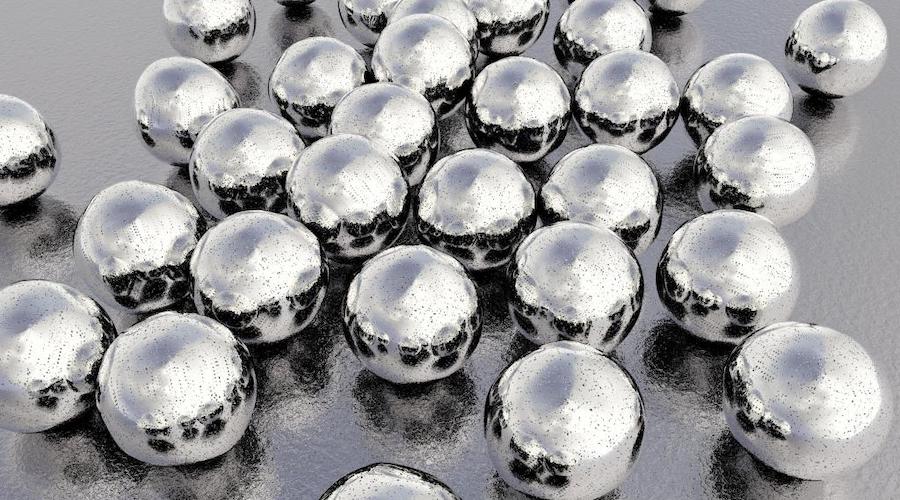
Silver nitrate may also be used during surgical procedures to cauterise incisions, reduce bleeding, and kill off unwanted microbes. Likewise, it works effectively to hasten scab development and thus reduce bleeding in minor skin injuries. It’s also used to treat nail bed fungus.
Used a deodorant recently? If so, it may have contained silver chloride, noted for its antimicrobial properties that help prevent those unhealthy, odour causing bacteria.
Get silver acetate to help you out with your Quit Smoking goals. Small amounts of this compound can be added to quit products like lozenges, mouth spray, and chewing gums. The idea is that if you do happen to lapse, the taste of silver acetate combined with cigarette smoke tastes absolutely foul, and thus acts as a deterrent. Repaton was a lozenge with 2.5mg of silver acetate produced back in the 70’s and then there was Tabmint, a chewing gum also laced with silver acetate.
Just a side note here – whilst silver in small AKA minute quantities is not toxic, large amounts can build up in the tissues causing a condition called agyria. Always seek medical advice before starting any type of medical treatment.
We’re all familiar with long life batteries AKA silver oxide or silver zinc batteries. They contain silver oxide. These batteries can last half as long again as lithium-ion and other traditional batteries. They also have the advantage of being lighter and smaller, making them ideal for use in gadgets like hearing aids, watches and other equipment that needs to be relatively lightweight. The Apollo Lunar Module and the lunar rover both used silver oxide batteries.
Want to use your smartphone but your hands are frozen? No problem. Just slip on a pair of touch screen gloves with silver thread interwoven into the fabric and off you go.
Printing electronic circuitry onto paper produces highly flexible, lightweight, inexpensive, and biodegradable electronic components for use in products like RFID tags, touch pads, flexible solar cells, flexible displays, thin film transistors and more. Indeed, the technology has been a groundbreaker in terms of enabling ‘intelligent packaging functionalities’.
It’s found uses in anti-counterfeiting, tracing and tracking, storage management, logistics, and transport to name a few. Paper-based electronics uses 3D printers to apply or ‘sinter’ nanoparticle-based metallic inks onto a paper-based substrate. However, one obvious problem is that sintering involves heat, and most metallic inks have a high sintering temperature. Heat and paper typically don’t get on very well, so researchers have been looking for metals with high conductivity and low sintering temperatures. A type of silver NP based solution appears to fit the bill. Similar technology has also been used to customise silver jewellery.
Without silver, we may not have solar panels, one of the greatest boons to clean energy generation we’ve yet seen
You’ll have noticed that CDs and DVDs have either a silver or gold coating but do you know why? Silver is particularly known for its ability to resist tarnishing and pitting so adding a coating of silver to media devices like DVDs helps prolong their life. Silver also doesn’t react with the coloured dyes in the dye layer on discs, and it improves the reflectivity of the disc. Reflectivity is an optical property used to measure how much light is reflected from an object relative to the amount of light happening on that same object. The reading laser in a CD / DVD reader bounces off this reflective surface and is read by a pickup sensor in the device. Therefore, the better the reflectivity of the surface, the better it can be read.
This same high reflectivity property makes silver ideal for coating the surface of infrared telescope mirrors. At the same time, the silver helps reduce thermal emissions from the telescope.
Without silver, we may not have solar panels, one of the greatest boons to clean energy generation we’ve yet seen. Or at least they wouldn’t be as effective as they are. Silver is known for its high thermal and electrical conductivity – the highest of any metal. That makes it ideal for solar panels. A standard 1 metre x 1.7 metre panel can contain as much as 20 grams of silver, applied as a silver paste to glass panels where it catches all those rays of sunshine and converts them to photovoltaic energy.

Speaking of electricity – one of the most controversial types of power generation uses control rods to control uranium and plutonium fission rates in water based nuclear reactors. The rods are made from an alloy of silver, indium and cadmium, usually in a ratio of 80% / 15% / 5% respectively. These metals can safely absorb large numbers of neurons.
And yet more electrical generation applications, this time in fuel cells that use chemical energy to generate electricity. The application of a very thin layer of silver foil as a contact medium in fuel cells will ensure ‘long-term stability up to operating temperatures of 800C‘Then of course there is the silver in the billions of semi-conductors in use around the world….
Once upon a time, we didn’t have refrigerators. True story! We did however use milk and various other liquids that benefit from being kept cold and/or fresh, which begs the question. How did we do this without fridges? Answer – by keeping them in silver-coated containers or popping a silver coin into the liquid. Silver ions absorb oxygen needed by bacterial cells for respiration, thus destroying them and preventing them from spoiling the liquids. It’s been proven for instance that milk will stay fresher for 2 – 5 days longer with a silver coin added.
Three coins in a fountain…. Similarly, adding a silver coin to a water dispenser will keep the water fresher for longer and help sanitise the spout. However, for this to work properly you need what is called a Silver Round, a 99.9% silver coin that is produced and sold especially as a collectors item and is not legal tender. The silver coins that are in use today as legal tender typically contain far less silver. Alternatively, you can do what NASA and Russian astronauts do on board the Space Shuttle and International Space Station and use ionised silver to filter your water. Likewise, colloidal silver is used to coat ceramic filters for purifying drinking water in developing countries.
Appliance manufacturer Samsung has been utilising silver nano technology for over a decade. Their first range of ‘silver nano’ products, which included washing machines, came out in the mid 2000’s. The company claimed that when you did a load of washing, silver ions were released into the wash, deodorising, sanitising and ‘coating the clothes’ with silver ions that provided further protection post wash. Their current range of refrigerators incorporate what Samsung calls their “Silver Nano Health System” which is designed to keep your fridge and the food in it cleaner, fresher and healthier.
There is now a range of various household gadgets that incorporate silver technology, notably where it’s important to prevent or reduce mildew and mould growth, and kill bacteria. Humidifier tanks, sanitisers, air purifiers, air conditioning filters, icemakers, bird feeders etc are all on the list.
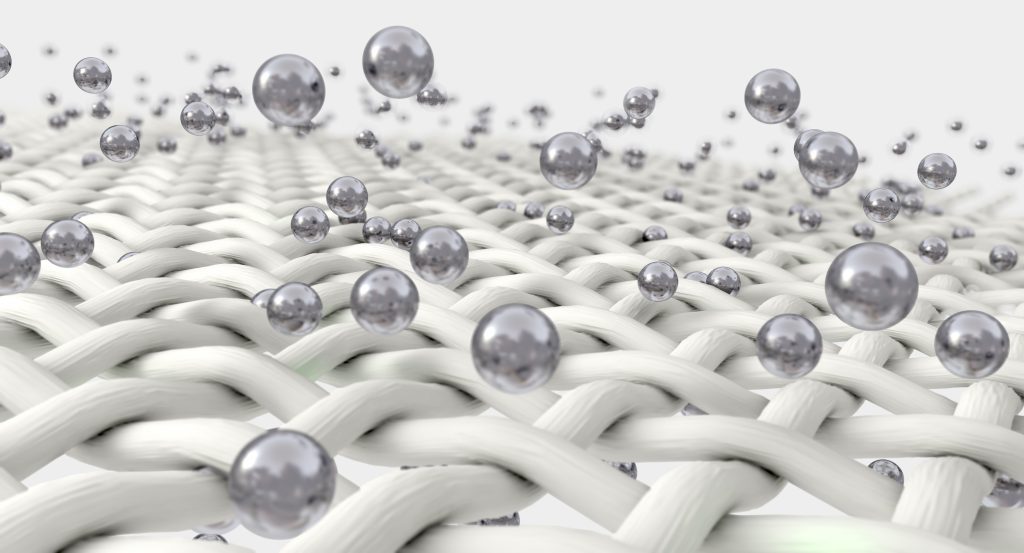
Some laundry detergent manufacturers have added silver ions to their products for the same reason Samsung uses the technology. They’re not only deadly on bacteria but also help reduce odours. Turns out the ions may provide antifungal, antibiotic, and antistatic benefits for your washing as well.
Indeed, silver has found its way into a myriad of household products and items of clothing. Sheets and bedding with silver nano threads woven into them can take care of the unpleasant microbes and various other organisms that thrive in bedding. When the silver ions encounter your damp skin or sweaty fabric, they go to work killing off the microbes.
Silver laced fabrics like this are being used in increasingly inventive ways. Silver lined footwear insoles help remove bacteria and odour from pongy shoes. Stay bacteria and odour free whilst travelling with a range of anti-odour, anti-bacterial travel gear, including bags and coats. Don silver laced sports wear or hunting gear before your next game of sport, workout or hunting trip for a fresher, more odourless experience.
Clean your teeth with a toothbrush whose bristles brim with silver ions and cleaning your dentures also just got silver assisted, and chemical free. For the ultimate touch in hair styling products, treat yourself to a silver nano curling wand, comb, or hair drier. A nice colloidal silver body gel is just the thing for taking better care of your skin and naturally healing any cuts and scratches you’ve acquired.
Baby hasn’t been left out either. South Korean and Vietnamese companies are making silver nano infant products like nursing bottles, dummies, mugs and baby wipes.
Now we all know cutting boards are notorious havens for smells, bacteria and other harmful microbes. However, Japanese and South Korean cooks have overcome these problems by using cutting boards infused with silver particles.
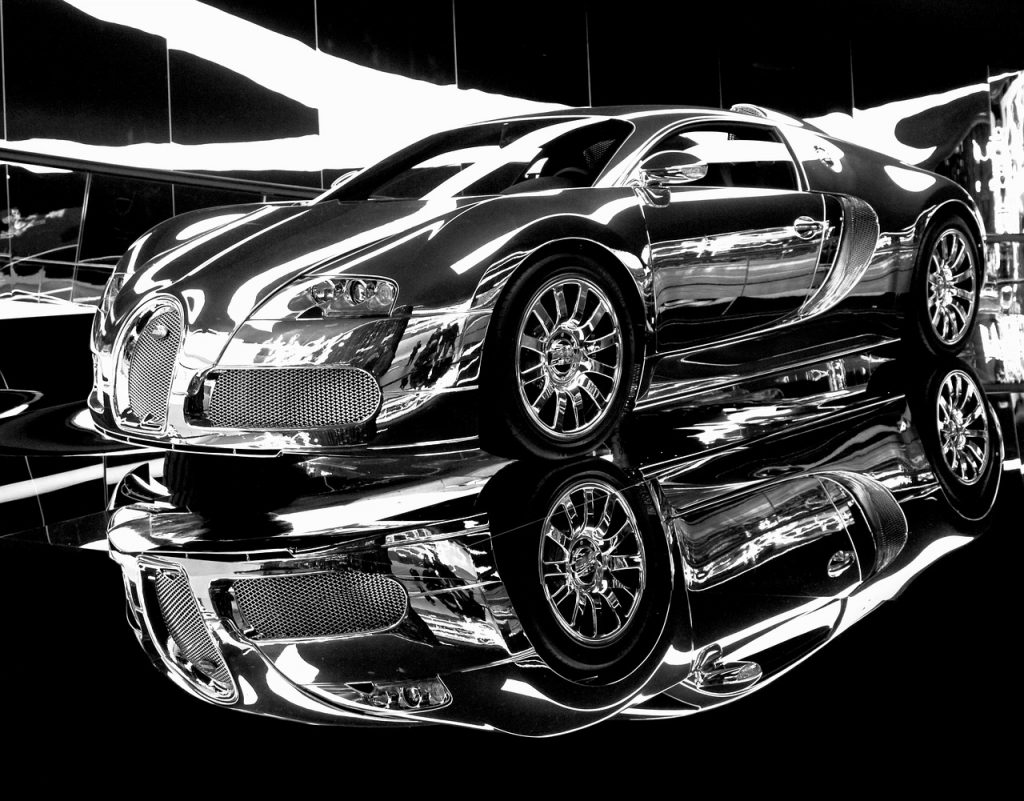
Your car is a veritable treasure trove of silver. It’s everywhere, from the electrical contacts that let you start the engine and perform a myriad of other functions, to the distance sensors and assisted parking systems that stop you reversing into things. On cold frosty days, silver-ceramic elements provide heat via conductive lines across your rear window to remove frost and ice. On very hot sunny days, a silver coated windscreen will help reflect solar heat and keep your car cooler.
Silver has a very high melting point (961.8C) making it ideal for high temperature applications. For this reason it’s commonly used in engine components that are subjected to a lot of heat. Notably, silver electroplated steel ball bearings not only withstand high temperatures in machinery such as jet engines but also provide a protective layer between the bearings and their housing. This reduces friction, which improves performance and prolongs the life of the engine. Silver coated ball bearings are also used in helicopters.
We’ve mentioned this elsewhere but the anti-freeze coolant in your radiator contains a lot of something called ethylene glycol. Ethylene glycol is made from ethylene oxide, which in turn is produced by oxidising ethylene using a silver catalyst.
Photography and film were amongst the earliest adopters of silver based technology. Photographic film is nothing more or less than a sheet or strip of transparent plastic coated on one side with silver halide crystals in a gelatine emulsion. The crystals are light sensitive and when exposed to light, leave an undeveloped image on the film that can then be developed into a visible picture. The technology is still used in X-ray photography. More importantly, the silver is recyclable because it isn’t destroyed in the process.
Just as the film used in old analogue cameras used silver, so too did the lens in many of those cameras. Silver’s highly light reactive properties made it ideal for such a light sensitive job.
Many historic buildings like churches and cathedrals are noted for their beautiful stained glass windows but did you know that silver is a traditional part of the process of making them? Up until the early 1300’s, glassmakers used copper, iron and manganese to make the coloured glasses used in these magnificent works of art. By carefully controlling oxidation in the furnaces during firing, they could produce a range of different colours and hues from greens and blues through to reds, oranges, pinks and purples. However, it was difficult to produce clear, strong yellow colours using these minerals. Silver fixed this problem. Glassmakers in France discovered that by mixing silver sulphide or silver nitrate with pipe clay and applying it to clear glass, they could not only produce lovely clear, bright yellows but could also use the mix as a paint for creating and highlighting intricate, delicate designs. It was also subsequently applied to the surfaces of coloured glass to produce even more colour tones and hues.
Silver is an important catalyst in the production of formaldehyde and ethylene oxide, two key ingredients in many of the plastics we rely on
Liquid at room temperature, ionic liquids made from silver ions are effective for cleaning up waste from petroleum.
Cloud seeding is a relatively common weather modification technique used to try and create moisture-bearing clouds that can produce rain or snow. The ‘seed’ is silver iodide, a substance with similar molecular properties to ice. Does it work? This study indicates that it does but does the expense warrant it? Regardless, the US uses some 3 tonnes of silver each year seeding clouds, so clearly some parties think it is.
Silver is an important catalyst in the production of formaldehyde and ethylene oxide, two key ingredients in many of the plastics we rely on. Formaldehyde is used in the manufacture of resins, solid plastics, and protective coatings as well as being an embalming agent and a disinfectant. Ethylene oxide is used to make moulded and flexible plastic products, and ethylene glycol, the main ingredient in antifreeze.
If you’ve ever used treated wood, chances are it was saturated with arsenic based chemicals. Traditional wood preservation and termite treatments use chemicals like chromated copper arsenate. However, due to the toxicity of these chemicals, attention is turning to silver and its known biocide properties. Silver of course comes with the added advantage of being antimicrobial as well.
Mirror mirror on the wall. Mirrors are sheets of glass with a thin layer of silver nitrate or aluminium on the back. The light hits the silver and bounces back to produce an image of whatever is in front of it.Silver is used in brazing and solder alloys. Typically, the quality of silver used is fairly low because it only needs to bond the 2 surfaces together.
Silver coated door handles sound like something out of a home decoration magazine but there’s actually sound science behind them! We explained earlier that silver ions are activated by moisture. So, when you grab that silver door handle with your hot sweaty bacteria covered hand, the ions react to the sweat, jump into action and kill off the bacteria you’ve deposited. That means the next hot sweaty bacteria covered hand that comes along will have a nice clean door handle to grab (and re infest with bacteria!).
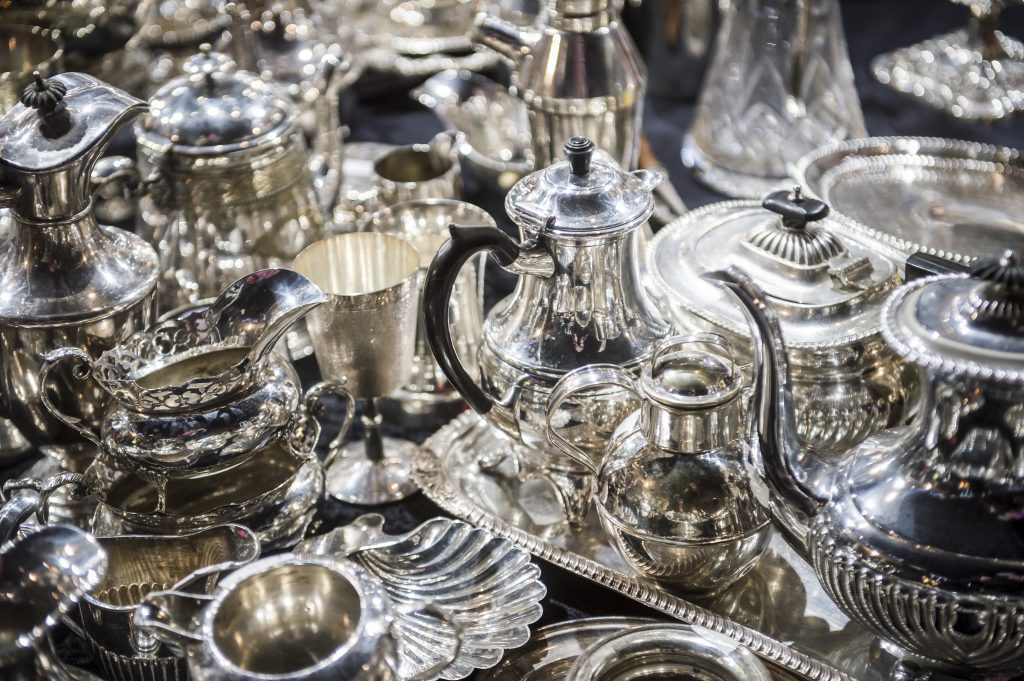
Silver fulminate is an explosively fun way to use silver. When you pull those fancy Christmas crackers apart at the family Christmas do, the sharp crack they emit comes courtesy of some silver fulminate embedded in a strip of cardboard inside the cracker. As the cracker is pulled from each end, it builds up friction in the strip of cardboard, which detonates the fulminate. Likewise, bang snaps have a small amount of silver fulminate in them that explodes when the snap hits a hard surface. Silver fulminate must be stored in minute quantities however because it can self-detonate under its own weight.
Speaking of special family dinners – they’re often a good opportunity to get out the silver tableware. If it’s sterling silver and not just silver plated flatware, it will be 92.5% real silver and 7.5% alloys. The alloys are added to provide durability due to silver’s relative softness as a metal. Silver plated products on the other hand are just a base metal sprayed with a thin coating of silver and whilst they may look shiny and impressive, aren’t worth anywhere near as much as sterling silver. You can tell which is which by making a small unobtrusive scratch somewhere on the item and dabbing a bit of household white vinegar on it. If it turns green or some other colour, it’s not the real deal.
Ever heard of ‘vark’, also known as ‘varak’? It’s an edible type of pure silver (or gold) foil used in South Asian (notably Indian) cuisine. The foil is only micrometres thick, and is customarily used as decoration on sweets and foods.
Scientists have known since the 1960’s that cooling some types of molten metals very very rapidly turns them into a glass like product called appropriately metal glass. Metal glasses are stronger than glass and in many cases even tougher than steel. That makes them ideal for applications where super strong, super durable building materials are needed. Fancy flying around in a glass plane? Silver is one of the metals that can be used to produce metal glass.
Silver may be added to polyester window treatments for reducing light.
Then there are all the various other well-known uses like silver jewellery, colloidal silver, coins (both the collectors and the currency versions), musical instruments (notably flutes and piccolos) and so on. So many uses for such a versatile metal.
(This article first appeared in Mining International Ltd.)